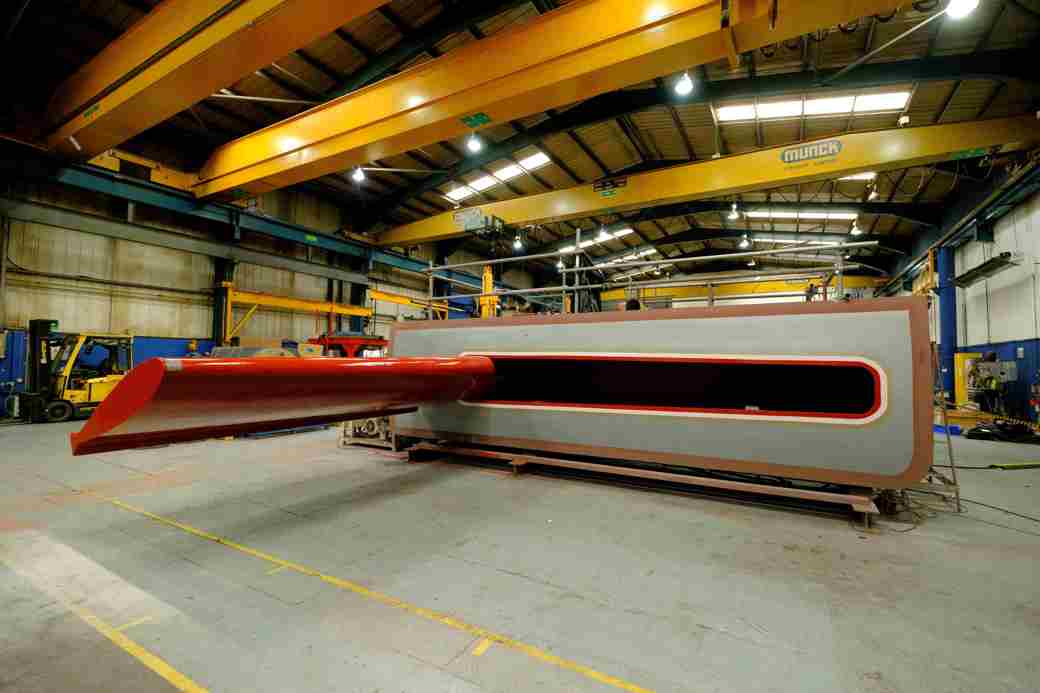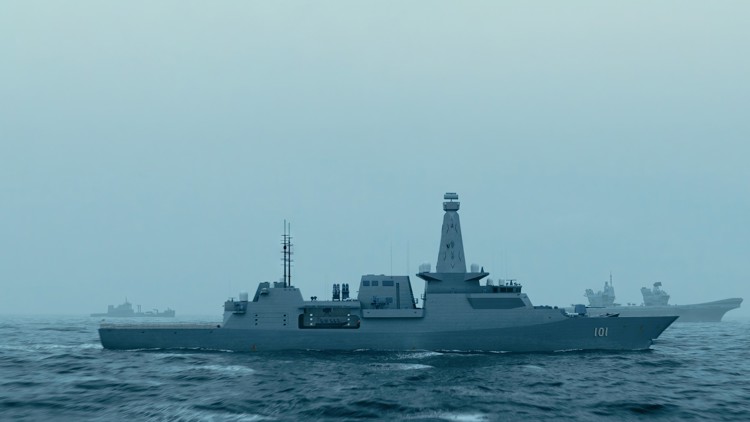
Stabilisers fit for navies
Kongsberg Maritime’s facility in Scotland has been delivering stabilisers for naval operations since the days of the first aircraft carriers
Navy ships need to be stable platforms for operating sensitive equipment and activities such as landing helicopters or deploying small craft. That makes effective, reliable stabilisation systems a vital component.
Kongsberg Maritime can trace its production of ship stability systems back to 1871 with its manufacturing site in Dunfermline, Scotland. It was at this site that the first hydraulic steering systems were developed to cope with the change from sail power and steam engines to diesel engines. In the 1920s and 30s, the factory owners developed launch systems for nascent aircraft carriers and, through a joint venture, began building retractable fin stabilisers.
Today, the facility is the centre of production for Kongsberg Maritime’s stabiliser and naval linear actuator steering gear product ranges.

Naval vessels such as the UK Royal Navy’s Type 31 frigate use our Neptune stabilisers. Each of the Royal Navy’s Queen Elizabeth Class aircraft carriers use two pairs of our Neptune stabilisers.
“For the naval market, we regularly need to meet stringent noise and vibration criteria to ensure our system complements the mission-critical activities of naval ships,” says Paul Crawford, Vice President – Naval Sales at Kongsberg Maritime. “In addition, we can supply Integrated Logistic Support to meet the requirements of the customer.”
Kongsberg Maritime’s Modular stabilisers have been supplied to many of the world’s navies, including the US, Brunei, Malaysia, India, Australia, and the UK Royal Navy. Current projects include deliveries to the Royal Navy for their Type 26 programme and the Royal Malaysian Navy.
"Our fins can be adapted to customer requirements, and while the product itself is standard, each ship and each ship type has different hull lines, so we work closely with navies and shipyards in developing solutions that exactly match the ship and mission requirements”
Kongsberg Maritime produces retractable and non-retractable stabilisers for naval and governmental craft, as well as for the commercial market.
Our retractable stabilisers come in two classes, with fin areas ranging from 1.4m2 up to 22.3m2. The smaller Aquarius line has fin areas from just over one square metre up to five square metres, while the larger Neptune line has fin areas from five square metres and up.
“The retractable-fin solution we have come up with is truly pioneering,” says Crawford. “Our fins can be adapted to customer requirements, and while the product itself is standard, each ship and each ship type has different hull lines, so we work closely with navies and shipyards in developing solutions that exactly match the ship and mission requirements.”
We offer two ranges of non-retractable stabilisers: Gemini stabilisers, normally used on offshore patrol vessels and coast guard ships; and the Modular range, which meets military standards for noise, shock, and vibration. The fins for non-retractable stabilisers are trapezoidal in shape and designed to fit within the beam of the vessel. These non-retractable stabilisers cover fin areas ranging from 2 m2 to 16.5m2.
All Kongsberg Maritime non-retractable fin stabilisers include the hull closing plate as an integral part of the fin unit that is shaped to fit the hull lines. The installation procedure is simplified so that expensive seating structures and finishing work are avoided. Naval linear actuator steering gear is similarly shock qualified for military use.
